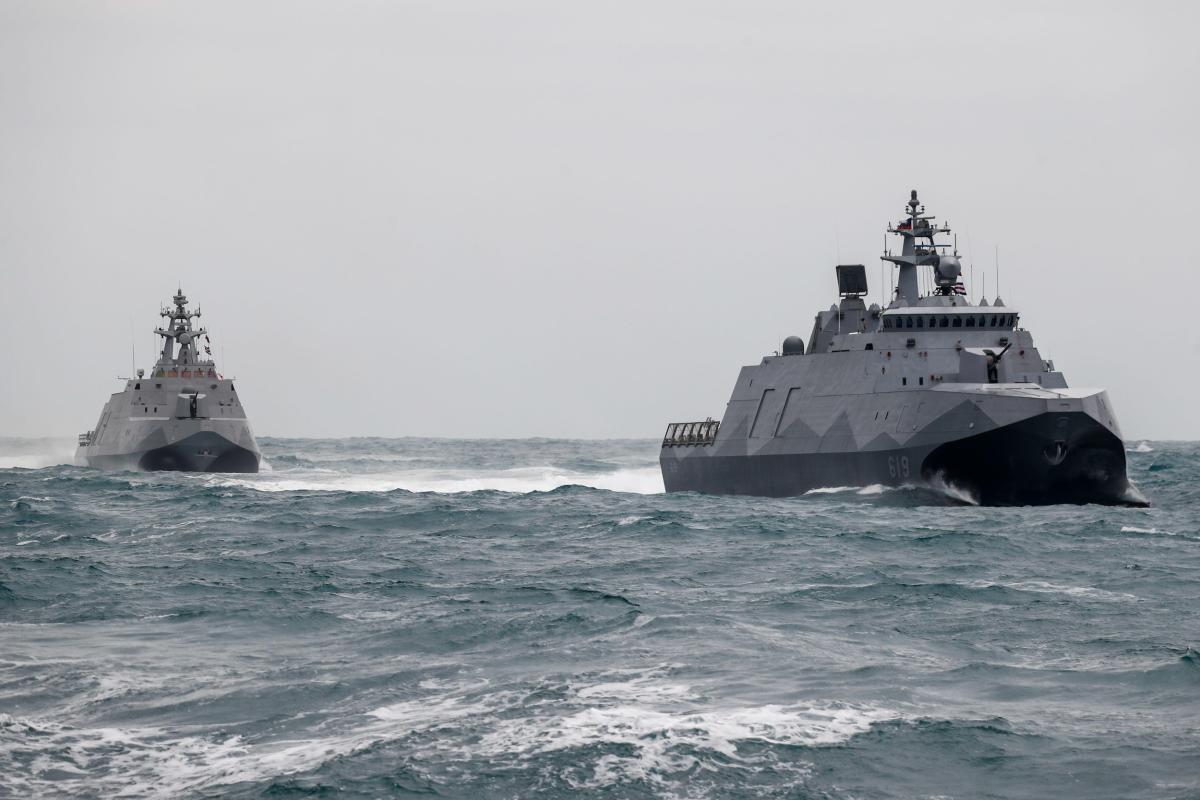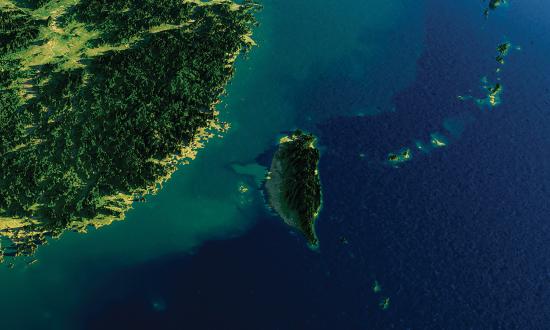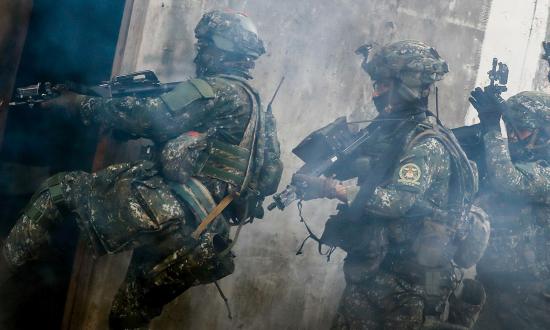Since the 1970s, the United States has maintained a policy of strategic ambiguity toward the China-Taiwan problem. That is, it has remained intentionally vague about how it would support Taiwan should China attempt to take it by force or coercion. This strategy is meant to inject uncertainty into China’s decision-making calculus and thereby elicit caution and restraint.
At the time of its inception, strategic ambiguity did create a sufficient deterrent. Unfortunately, China’s increasingly coercive actions in recent years demonstrate that this strategy no longer carries the deterrent effect it once did. In the past five years, there has been a noticeable increase in Chinese fighter jets and warships intercepting U.S. and allied forces in the Indo-Pacific.
Recently, China said it will never renounce the use of force as a means of “reunifying” Taiwan. Rather than being deterred, China seems increasingly willing to flout international norms in the region. As the 2022 National Defense Strategy notes, the U.S. military is facing “challenges arising from dramatic geopolitical, technological, economic, and environmental change.” The China of the 1970s is not the China of 2023. Therefore, an effective deterrence strategy must address the China threat as it is manifested today, not as it was 50 years ago.
In a 2021 statement, Admiral Philip Davidson, former commander of U.S. IndoPacom, said, “our deterrence posture in the Indo-Pacific must demonstrate the capability, the capacity, and the will to convince Beijing, unequivocally, that the costs of achieving their objective by the use of military force are simply too high.” Unfortunately, nothing about strategic ambiguity is “unequivocal.” The United States needs a bold, imaginative, and definitive change to its deterrence strategy if it is going to convince Beijing unequivocally of anything. To this end, U.S.
military leaders should adopt the mindset that the fight for Taiwan has already begun.
Furthermore, the U.S. government should pledge to defend Taiwan militarily, clearly defining what Chinese actions would elicit a U.S. response, and significantly increase and expedite the security assistance sent to Taiwan for its self-defense within the next five years.
Taiwan is Strategically Important to the United States
When it comes to supporting Taiwan’s freedom, there is no shortage of U.S. interests in the issue. A free Taiwan is critically important to the U.S. economy, foreign policy, and national security. Taiwan is the United States’ eighth largest trading partner, with Taiwanese investments in the United States topping $137 billion in 2020. In 2019, U.S. exports to Taiwan supported an estimated 188,000 American jobs. Taiwan also manufactures 65 percent of the world’s semiconductors, which are strategically important both commercially and militarily.
Perhaps even more important is Taiwan’s commitment to the values of democracy in a region overshadowed by Chinese authoritarianism. Taiwan’s democratically elected government is proof to the people of mainland China that they could thrive without the dictatorial rule of the Chinese Communist Party (CCP). This presents an existential threat to the CCP, whose message at home and abroad is that authoritarian government outperforms democracy. Taiwan’s vibrant democracy exposes this narrative for the lie it is.
Last, for China, “reunifying” Taiwan is a critical step in its campaign to “reshape the international order” and “become the world’s leading power.” The 2022 National Security Strategy prioritizes China’s revisionist foreign policy as the most significant strategic threat facing the United States. A free and open Taiwan impedes China’s ability to realize this vision, making Taiwan’s continued freedom a matter of U.S. national security.
Why Strategic Ambiguity is Obsolete
For nearly 50 years, strategic ambiguity, the U.S. One China Policy (which acknowledges Beijing’s claim that Taiwan is part of China, without supporting it), and the 1979 Taiwan Relations Act have guided the U.S. approach to deterrence in the Indo-Pacific. At the time of their inception, these policies and law adequately addressed the threat given the geopolitical landscape of the day. However, the conditions that predicated these policies have changed dramatically. Specifically, there are three major assumptions underlying these policies which are no longer valid today.
First, when establishing these policies, the United States thought China could become an ally in the fight to combat the specter of Soviet communism that threatened both nations. Policymakers optimistically speculated China might even become a democracy given enough time. Therefore, the United States shifted its focus from Taiwan to China. Unfortunately, China has not democratized and certainly is not an ally. Rather, China clings to its authoritarian rule and remains intent on undermining the United States and its allies around the world.
Second, the United States saw China as weak and in need of U.S. help to be brought into the modern era. During their early negotiations, the United States did not seriously entertain the possibility of China one day posing a legitimate threat to the United States. Michael Pillsbury discusses this at length in his book, The Hundred-Year Marathon, where he points out, “since the 1960s, U.S. policymakers have been led to believe that China is a backward nation, not militarily active, and certainly not focused on the United States as a military threat.” In fact, China stated in the 1972 Joint Communiqué, “we will never be a superpower and do not seek hegemony.” Today, China has become an aggressive superpower that actively seeks to broaden its malign influence around the world.
Finally, and most important, the United States assumed China would be willing to peacefully resolve its dispute with Taiwan if Washington cut ties with Taipei. Yet, to this day, China refuses to acknowledge the legitimate presidency of President Tsai Ing-wen. In August, China conducted military training exercises that effectively amounted to a simulated blockade of Taiwan. These actions underscore the reality that China has no interest in engaging Taiwan in legitimate, diplomatic discussions. The United States can no longer count on strategic ambiguity to provide an effective deterrent in the Indo-Pacific.
A New Approach
Despite China’s increasingly aggressive rhetoric and growing military strength, deterring an attack on Taiwan and ensuring its continued freedom is possible—with the right strategy.
First, U.S. military leaders should adopt the mindset that the fight for Taiwan has already begun. China certainly believes this. For years, Taiwan has been subject to Chinese disinformation and misinformation campaigns as well as political coercion. These fall under China’s “unrestricted warfare” doctrine that uses all available means to defeat an enemy. This includes unconventional tactics such as lawfare, sanctioned terrorism, and coercion.
Failure to take sufficient action early would only cede the initiative to China in the event of a kinetic conflict. The Center for a New American Security conducted a wargame in October 2021 simulating a Chinese invasion of the Taiwanese-held Dongsha Island. One of its main findings revealed a U.S. tendency to respond reactively to Chinese actions. It states, “this finding reinforces the need for pre-crisis planning so that every U.S. or Taiwanese move is not simply a response to Chinese actions.”
There are several preconflict actions the U.S. should take that will both deter Chinese aggression and give the United States an advantage should conflict break out. First, the United States should move enough logistical supplies into the region to last at least the first few months of conflict. Okinawa, Guam, and Taiwan itself could serve as staging grounds for ammunition, fuel, medical supplies, communication equipment, and other wartime logistics. This would also help mitigate the tyranny of distance should China one day restrict sea access.
The United States also must design and begin implementing a plan to rapidly reestablish telecommunications in Taiwan should they be attacked, like how Starlink has proved vital for Ukraine. The United States should continue onshoring and “friendshoring” strategic resources, materials, and sectors to ensure continued access. Finally, the United States should develop and implement a plan to counter Chinese disinformation/misinformation to win the information war and rally domestic and international support behind Taiwan. These steps will demonstrate to China that the cost of choosing war will be very high.
Defend Taiwan
Second, the United States should pledge to defend Taiwan and clearly define what Chinese actions would elicit a U.S. response. In effect, the United States should adopt a policy of strategic clarity. This way China is clear how far is too far. Such a move is one of the most heavily debated steps toward deterring China, and rightly so. Putting U.S. troops in harm’s way is never desirable. But, as discussed previously, Taiwan’s continued freedom is vital to U.S. national security and should be defended as such.
Consider the situation if the United States does not take this hard stance. China will slowly and incrementally chip away at security in the region, as it has been doing for years. From the islands it has built up and fortified, to the fighter jets it sends near Taiwan’s airspace, each of these micro-aggressions tests the waters to see how the international community, and particularly the United States, will respond. Therefore, a policy of strategic clarity, pledging U.S. military support of Taiwan and clearly defining what would elicit it, would cap China’s aggression and prevent escalation.
Increased Security Assistance
Finally, the United States should significantly increase and expedite the security assistance sent to Taiwan for its self-defense within the next five years. This would enable the most important component of the deterrence equation, which is Taiwan’s ability to defend itself. A sufficiently equipped and armed Taiwan serves as the greatest deterrent to China.
U.S. policymakers are beginning to make headway in this regard. In September, the U.S. Senate advanced the Taiwan Policy Act 2022, which allocated up to $6.5 billion in security aid to Taiwan over the next five years. The Senate then increased that amount to $10 billion in the 2023 National Defense Authorization Act. However, even this amount may be too little too late. It is impossible to know if or when China might invade Taiwan. However, Admiral Davidson said China may make a move on Taiwan by 2026. Failure to deliver timely and sufficient security aid to Taiwan will cost more than any aid package ever could. To put this in perspective, as of October 2022, the United States had sent approximately $19 billion in security assistance to Ukraine since 2014. Of this amount, $16.2 billion has been sent since the invasion began in February 2022. This means that in eight months, the United States spent almost six times what it spent in seven years supporting Ukraine.
Furthermore, the United States cannot assume it will have the luxury of sending aid to Taiwan post-invasion. The only reason Ukraine has been able to receive aid is because, in near-miraculous fashion, it did not fall within days as most of the world’s intelligence communities predicted. The United States cannot bank on a second miracle. In the case of Taiwan, whatever armament it has when a fight breaks out may be all it gets. By investing big and investing early in Taiwan’s defense, deterrence has its best chance at succeeding.
China is a major threat, but not an undeterrable one. By revising its deterrence strategy in the Indo-Pacific, the United States can impose such high costs that China would choose not to take Taiwan by force. Instead, China would be forced to revert to what was agreed upon in the 1970s—to resolve the issue diplomatically with Taiwan.






